
Diving Linden Harbour… Located roughly half-way along the south coast of New Britain is this gem of a dive location! Bounded by a series of outer barrier reefs, the inner lagoon at Linden Harbour provides a safe anchorage in a superb location.
And, in between those reefs, are incredible channels that offer some of the best diving on the south coast.
Add in some excellent reefs inside the lagoon, plus a WWII wreck and you can see why Linden Harbour rates so highly.
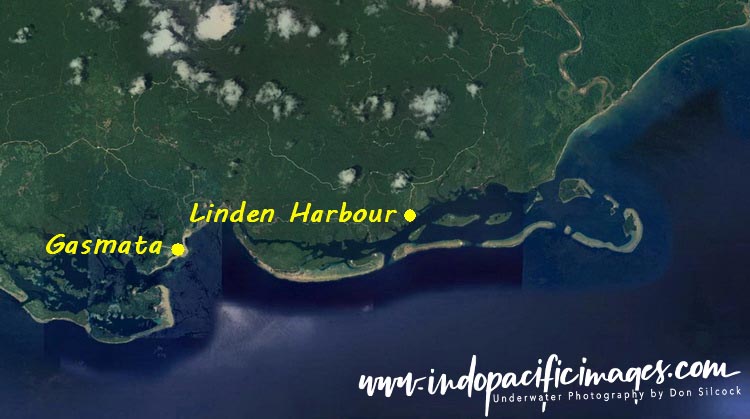
Also known as Lindenhafen, from the days when this part of PNG was ruled by Germany, Linden Harbour is really a quite spectacular location. One that can be best appreciated from the air, courtesy of a drone…
Linden Harbour’s strategic location on the south coast, together with its safe anchorage played a role during WWII. With the Imperial Japanese forces establishing a seaplane base in the lagoon.
Diving Linden Harbour – The East Channel
Diving the east channel at Linden Harbour on an incoming tide is simply spectacular and has to be experienced!
The walls of the channel are covered in a rich marine growth of fans, sponges and soft corals.
While scattered across the bottom of the channel are several incredibly beautiful bommies.
Although the incoming tide brings clean water from the deep waters to the south.
As the channel narrows, it delivers them at a considerable velocity!
So you can find easily find yourself being rocketed along.
Therefore the trick is to duck behind one of the bommies and enjoy the scenery…
The view from a drone best illustrates the underwater topography, with the channel narrowing like a natural venturi!

The sheer vibrancy and health of the marine growth on the walls of the channel and the bommies is stunning. Testament indeed to those rich waters from the deep basins of the Solomon Sea!
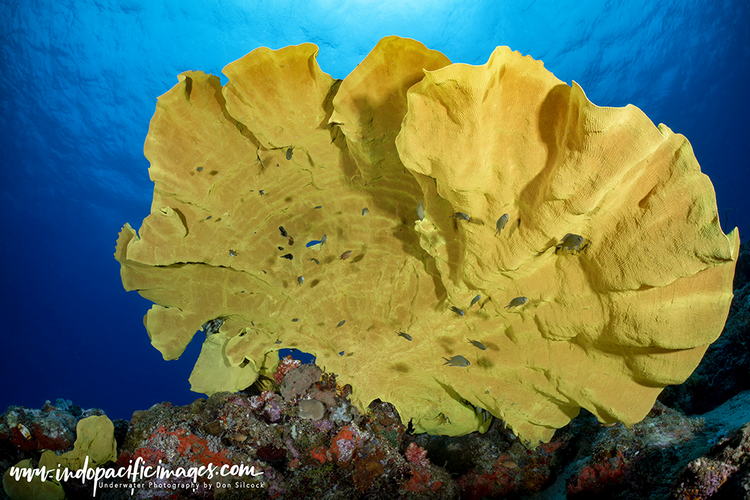

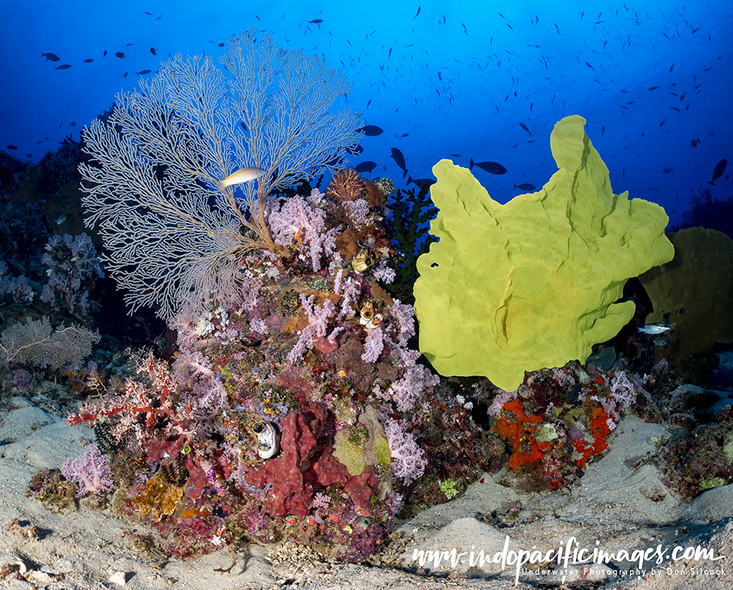
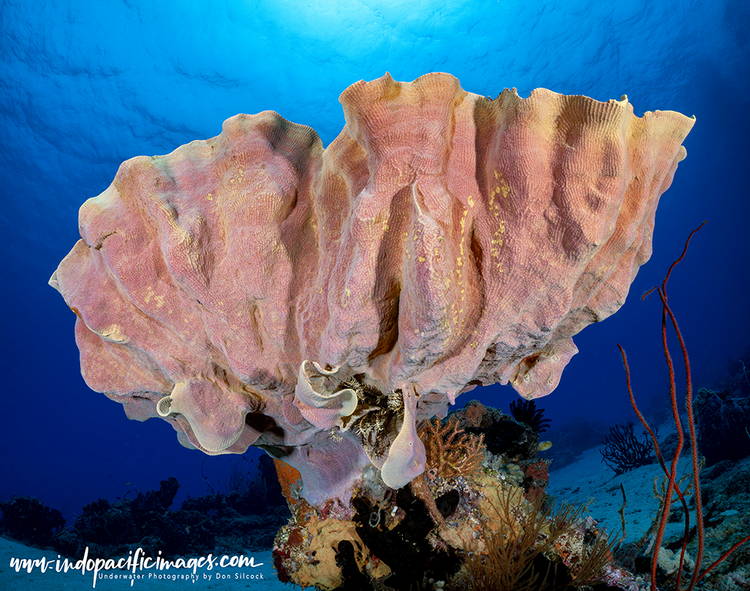
Diving Linden Harbour – Elsie’s Reef
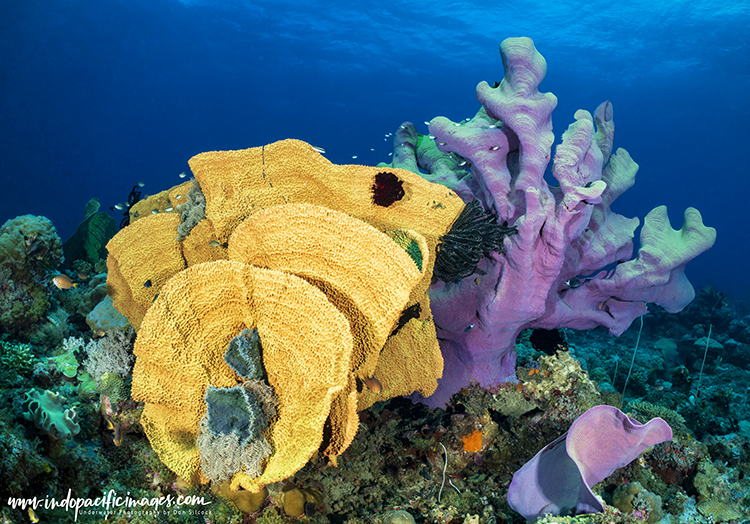
Located inside the lagoon a Linden Harbour is this exceptional reef, which is named after one of the former dive guides on MV Febrina.
Elsie’s is a crescent shaped reef that starts in just 5m and then slopes down gently before dropping off in to the depths.
There is much to see on the reef with beautiful elephant ear sponges, gorgonian sea fans and incredibly colorful crinoids.
In particular, the shallow area on top of the reef at Elsie’s is a great place for wide-angle photography.
With excellent light, clear blue water and an abundance of vibrant subject matter to fill the frame!
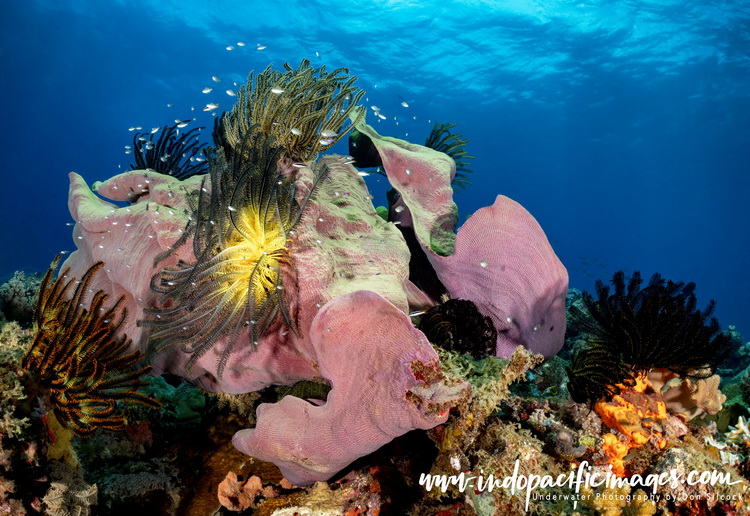

Diving Linden Harbour – Japanese By-Plane Wreck
At ground level there are almost no signs that Linden Harbour was a Japanese sea-plane base during WWII. But from the air its easy to see why its sheltered lagoon would have made it prime real estate…
Which, combined with its strategic location on the south coast would have made it an excellent place to operate from.
Not a great deal is on record about those operations… But a few aircraft wrecks have been found in the lagoon. With the best of which being a largely intact Aichi E12A1 “Jake” seaplane.
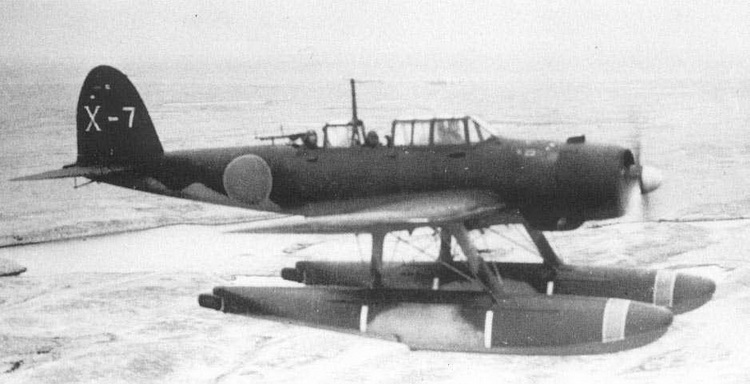

The plane lays on its back, with one of its two floats pointing to the surface, in 18m of water just off from Poronga Island.
The plane is relatively intact, apart from the second float, and although it is not that big it still makes for an excellent dive.
Like the “Deep Pete” aircraft wreck in Kavieng, the name “Jake” comes from how the Allied Forces identified Japanese aircraft during WWII.
As the actual naming convention was both difficult to understand and pronounce.
The Japanese gave two names to each aircraft, with one being the manufacturer’s alphanumeric project code.
The other being the official military designation. So code-names were used by the Allies instead.
With western men’s names given to fighter aircraft. Women’s names for bombers and transport planes. Bird names for gliders and tree names for trainer aircraft.
Exploring the wreck is really a straightforward and interesting dive, but don’t miss the open bomb bay…
With its open doors and quite large ordinance plain to see!


Back To: The South Coast of New Britain
